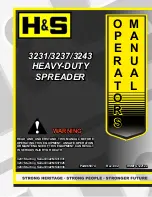
19
9. Maintenance and service
The equipment is subject to very high mechanical stresses. A visual inspection is to be
carried out after every use: however, at least one visual inspection is to be carried out
annually. These inspections enable the early detection of wear and tear, which means that
punctual replacement of this wearing parts prevents breakages from occurring. A function
test is also to be carried out every three years or should there be any doubt regarding the
safety or reliability of the equipment.
(Please also observe the relevant valid national and international regulations pertaining to
service intervals of rescue equipment). In the Federal Republic of Germany, regular safety
inspections according to the regulations of the
G
esetzlichen
U
nfall
v
ersicherung (GUV;
connoted ‘Legal accident insurance’) are mandatory.
CAUTION!
Clean off any dirt before controlling the equipment!
WARNING / CAUTION!
In order to carry out maintenance and repair works, tools appropriate for the job
and personal protecting equipment are essential.
8. Dismantling the equipment / deactivation following
operation
8.1 Spreader
8.2 Hydraulic unit
8.3 Hoses
Once work has been completed, the spreader arms are to be closed so that there is a
tip distance of just a few mm. This relieves the hydraulic and mechanical strain on the
equipment.
Upon completion of work, the unit must be deactivated.
First of all, decouple the pressure hose then the return hose as described in chapter
“Connecting the equipment”. Ensure that you put the dust protection caps back on to the
couplings.
















































